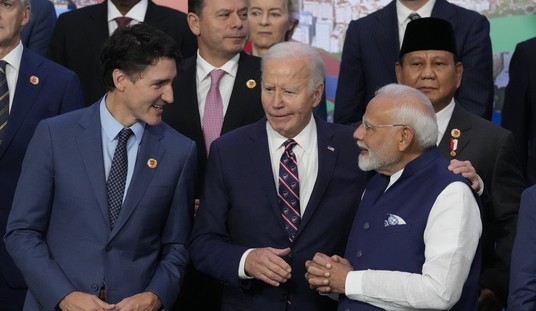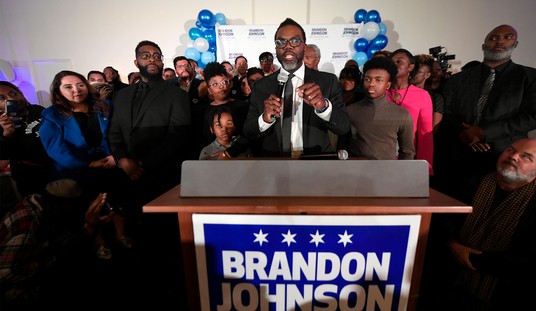Republicans on Capitol Hill are pushing back hard on the AP report yesterday that claimed the deal reached between John Boehner and Barack Obama would only save $352 million off the FY2010 spending plan. John McCormack at the Weekly Standard points to an analysis at Politico by David Rogers that explained that cuts made in the middle of budget cycles don’t stop money from being spent:
[W]hen CBO estimated the initial House bill in February, it projected that the $61.3 billion in nonemergency appropriations cuts would result in $9.2 billion in outlay reductions by Sept. 30 when measured against comparable outlay estimates two months earlier, on Dec. 20.
By comparison, the precise appropriations cut now, $37.7 billion, translates into a vastly smaller sum, $352 million, using the same standard.
A more accurate picture can be drawn by separating out the annual Pentagon portion of the bills.
When this is done, the House bill in February can be seen as having truly proposed to cut more than $68 billion from largely domestic and foreign aid appropriations. The resulting 2011 outlay reduction forecast by CBO was about $18 billion — a roughly 4-1 ratio.
By comparison, the deal now cuts $42 billion from non-Pentagon accounts, but the outlay reduction is about $8.2 billion — a 5-1 ratio.
Continuing resolutions don’t cut anything at all beyond their expiration date, AJ Strata explains, which is why we don’t want government by CR:
Like the ‘shovel ready’ nonsense squawked by the liberal media around the Democrats failed Stimulus Bill in 2009, every action by Congress takes months and years to filter its way through the bloated federal bureaucracy and its ocean of paperwork. That applies to spending increases and cuts. The ship of state is a ponderous and slow thing, making snails look like formula 1 race cars.
What you get in these CRs is nothing more than a commitment to follow through and cut spending, stop programs, close down activities in following budgets. You do not get a $38 billion dollar rebate. That is why you don’t want government by CR – the entire plan in the CR is vaporized once the period of the CR is over. All these cuts disappear on October 1, [2011] if they are not forwarded into the more binding and long term GFY budget for 2012. There you have more resilience (though any Congress can change direction at any time – thus the idea to enact 2 year budgets).
Hill sources point to the updated AP story, which provides a little more context on the issue of driving these debates six months into a fiscal year:
At issue is a concept in budgeting that is often difficult to grasp. Appropriations bills like the pending measure give agencies the authority to spend taxpayers’ money. But such authority typically takes months or years to actually leave the federal Treasury, so cuts made in the middle of the budget year often have little immediate impact.
So basically the story is this: the budget bill reduces authorizations for spending by $38 billion. The actual spending that would have occurred between now and the end of the fiscal year that gets curtailed by these authorizations is $352 million below FY2010 rates, as the National Journal reports:
A comparison prepared by the CBO shows that the omnibus spending bill, advertised as containing some $38.5 billion in cuts, will only reduce federal outlays by $352 million below 2010 spending rates. The nonpartisan budget agency also projects that total outlays are actually some $3.3 billion more than in 2010, if emergency spending is included in the total.
The astonishing result, according to CBO, is the result of several factors: increases in spending included in the deal, especially at the Defense Department; decisions to draw over half of the savings from recissions, cuts to reserve funds, and mandatory-spending programs; and writing off cuts from funding that might never have been spent.
The baseline figure is the FY2010 budget rather than Obama’s FY2011 budget request. That’s a fair comparison, since the CRs have basically spent at FY2010 levels, but it’s still an important distinction. Also, the CBO appears to have assumed that some of these cuts from spending would never have been spent even without the rescissions, a possibility but not a certainty without the rescissions in place.
The tally of savings only accumulates in FY2011 according to the rate at which those funds would have been spent in the next five months, according to CBO’s estimates. Since these authorizations mainly zeroed out programs that would have continued into succeeding fiscal years, the long-term impact of these cuts is much more significant. The GOP leadership scores that as $315 billion over ten years (CBO apparently didn’t score the long-term projection), which is a lot more significant than the $352 million figure indicates. Besides, spending authorizations are all that Congress can impact, especially this late in the budget cycle.
Of course, that’s also nothing more than a symbolic dent in projected deficits expected to run around $10 trillion over the same period. But we knew beforehand that we weren’t going to solve the problem in the FY2011 budget debate. The structural problems driving the deficit are in entitlement programs, which have to be amended through statute rather than budgeting, and that debate can now start that we’ve finished the FY2011 budget. That won’t make critics of the budget deal any happier — there is still plenty to criticize in the level of reductions in the authorizations — but at least we’ll all be on the same page as to what Congress can and cannot do at this stage for FY2011, and what this deal actually does.








Join the conversation as a VIP Member